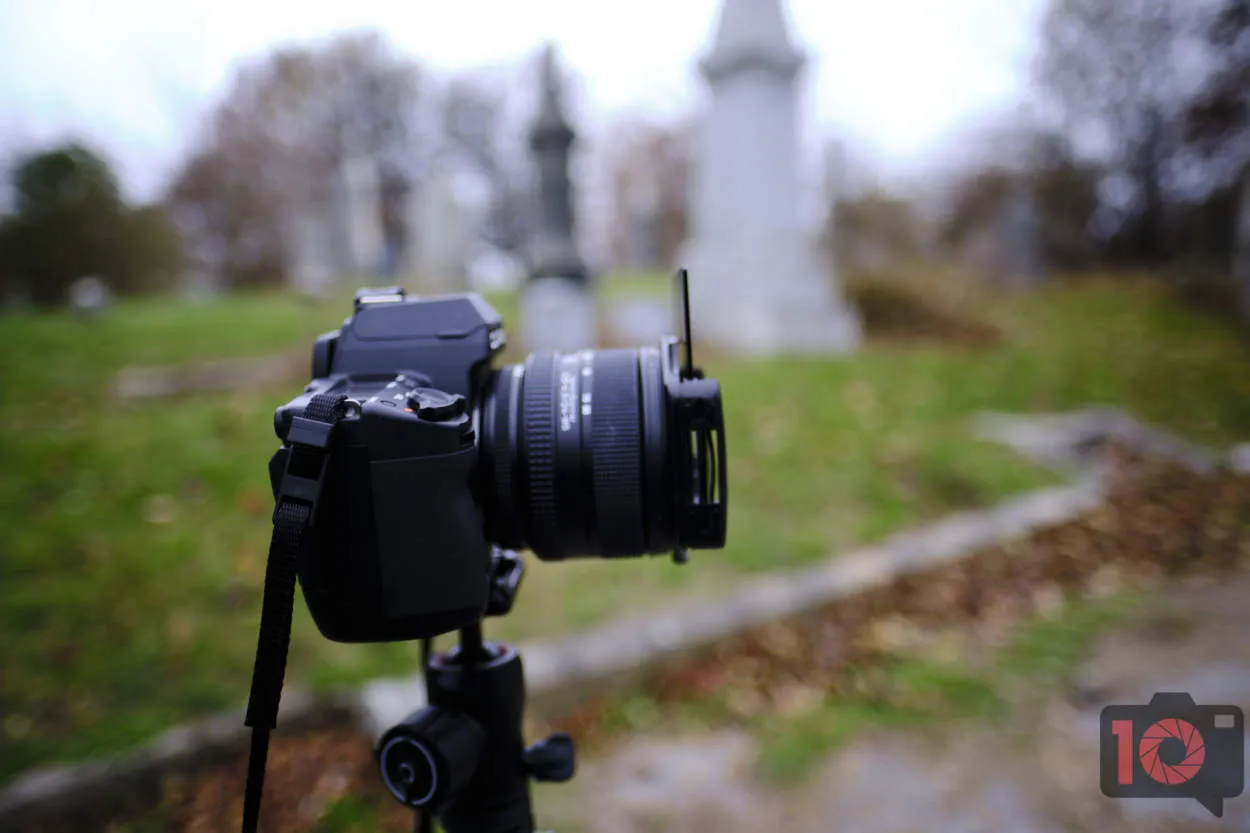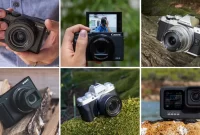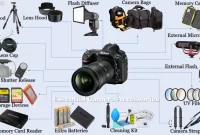Choosing the right camera for your photography style is crucial in capturing the perfect shots. Whether you’re a travel photographer, a portrait enthusiast, or a wildlife seeker, finding the camera that suits your needs is key. In this article, we’ll guide you through the process of selecting the right camera to enhance your photography skills and bring your creative vision to life.
Identifying Your Photography Style and Needs
When it comes to choosing the right camera for your photography style, it’s important to first identify your unique needs and preferences. By understanding your photography style, you can make an informed decision and ensure that the camera you choose complements your creative vision.
1. Determine your photography genre
Start by identifying the genre of photography that you are interested in. Whether it’s landscape, portrait, wildlife, street, or any other genre, each has its own specific requirements. Consider the type of subjects you love to shoot and the environment in which you typically work.
2. Assess your shooting conditions
Take into account the lighting conditions you usually encounter during your photo shoots. Are you often shooting in low light or challenging environments? This will help you determine the ISO performance and low-light capabilities you’ll need in a camera.
3. Consider your artistic preferences
Think about the overall look and feel you strive for in your photographs. Do you prefer vibrant and saturated colors, or do you lean towards a more muted and minimalist aesthetic? Understanding your artistic preferences will guide you in choosing a camera with the right color reproduction and image processing capabilities.
4. Evaluate your desired features and functions
Make a list of the specific camera features and functions that are important to you. Do you need advanced autofocus capabilities, a high-resolution sensor, or built-in image stabilization? Prioritize the features that align with your photography style and ensure they are available in the camera you consider.
5. Set a realistic budget
Lastly, determine your budget for purchasing a camera. There are various options available at different price points, so it’s essential to set a realistic budget based on your needs and financial capabilities.
By carefully considering your photography style, shooting conditions, artistic preferences, desired features, and budget, you can make an educated decision when selecting the right camera for your needs. Remember to research and compare different models, read reviews, and try out the cameras whenever possible before making your final choice.
Matching Camera Features to Your Photography Style
When it comes to choosing the right camera for your photography style, it’s important to consider the specific features that align with your needs and preferences. Different cameras offer various functionalities that cater to different types of photography. Here are some key factors to consider:
1. Sensor Size
The sensor size of a camera affects the image quality, low-light performance, and depth of field control. If you are into landscape or architectural photography, a camera with a larger sensor size will help capture more detail and offer better dynamic range.
2. Autofocus System
An efficient autofocus system is vital for sports, wildlife, or action photography. Look for a camera that offers fast and accurate autofocus with multiple focus points to track moving subjects effectively.
3. Megapixels
While higher megapixels can provide sharper images and more flexibility for cropping, they are more crucial for commercial or print work. For casual photography, a lower megapixel count is sufficient.
4. Shooting Speed
If you enjoy capturing fast-paced moments or photographing sports, a camera with a high frames-per-second (fps) rate is recommended. This will allow you to capture multiple shots in a short amount of time, increasing your chances of getting the perfect shot.
5. Lens Compatibility
Consider the availability and variety of lenses that are compatible with the camera you choose. Different lenses offer unique perspectives and abilities, so having a wide range of options can enhance your creativity.
Remember, the best camera for you ultimately depends on your personal photography style and goals. Do thorough research, read reviews, and consider your budget before making a decision. Happy shooting!
The Importance of Ergonomics for Long Photography Sessions
When it comes to photography, the right camera is crucial for capturing stunning images. However, it’s also essential to consider the ergonomics of the camera, especially if you frequently engage in long photography sessions. Ergonomics refers to the design and arrangement of equipment to optimize human well-being and efficiency. Here’s why it’s important to prioritize ergonomics when choosing a camera for your photography style.
- Comfort and Reduced Fatigue: During long photography sessions, you may spend hours holding and maneuvering the camera. Choosing a camera that feels comfortable in your hands can significantly reduce fatigue and prevent hand strain. Look for a camera with a grip that fits ergonomically in your palm, allowing for a secure and comfortable hold.
- Enhanced Stability: Sharp and clear images are the goals of every photographer. However, shaky hands can lead to blurred photos. Ergonomic cameras often come with built-in stabilization mechanisms or features that minimize camera shake, resulting in sharper images even in challenging shooting conditions.
- Easy Reach of Controls: When you’re in the middle of a photoshoot, it’s important to have easy access to essential camera controls. An ergonomic camera design ensures that buttons and dials are intuitively placed for quick adjustments, so you don’t miss crucial moments while fumbling with settings.
- Customizability: Everyone has a unique photography style and preference for camera settings. Ergonomic cameras often offer customizable options such as programmable function buttons or menus, allowing you to personalize the camera’s operation to suit your individual needs.
- Injury Prevention: Prolonged and repetitive use of cameras with poor ergonomics can lead to various health issues like tendonitis, muscle strains, and even chronic pain. By choosing a camera with a well-thought-out ergonomic design, you can minimize the risk of these injuries and ensure the longevity of your photography career.
In conclusion, while considering the technical specifications and image quality of a camera is important, the ergonomics of the camera should not be overlooked. Prioritizing comfort, stability, easy reach of controls, customizability, and injury prevention can significantly enhance your photography experience during long sessions. So, make sure to choose a camera that balances both functionality and ergonomic design to capture breathtaking images without compromising your well-being.
Considering Budget and Future Equipment Upgrades
When it comes to choosing the right camera for your photography style, there are several factors to consider. One of the most important factors is your budget. Without breaking the bank, you can find cameras that offer excellent image quality and features suited to your needs.
It is essential to think about the future and any potential equipment upgrades you may want to make. Investing in a camera system that allows for interchangeable lenses and additional accessories can provide flexibility and room to grow as your skills and needs evolve.
Before making a purchase, it’s crucial to research and compare different camera models. Consider the sensor size, resolution, ISO performance, autofocus capabilities, and image stabilization. These technical specifications will impact the quality of your photographs and their suitability for different photography styles.
Another aspect to think about is the ergonomics and ease of use. Make sure the camera feels comfortable and intuitive in your hands. Consider the weight, button layout, and menu system. It should be a tool that allows you to focus on capturing the moment rather than getting bogged down in complicated settings.
Furthermore, don’t forget to take into account the camera’s lens ecosystem. A wide range of available lenses provides versatility and options for different types of photography, such as landscapes, portraits, or wildlife. Check the availability and affordability of lenses that suit your interests.
In conclusion, choosing the right camera involves considering your budget limitations, potential future equipment upgrades, technical specifications, ergonomics, and lens system. By carefully assessing these factors, you can make an informed decision that aligns with your photography style and goals.
Conclusion
Choosing the right camera for your photography style is crucial in capturing the best moments. By considering factors such as the genre of photography you specialize in, budget, features, and image quality, you can make an informed decision that will enhance your skills and help you create stunning photographs.




